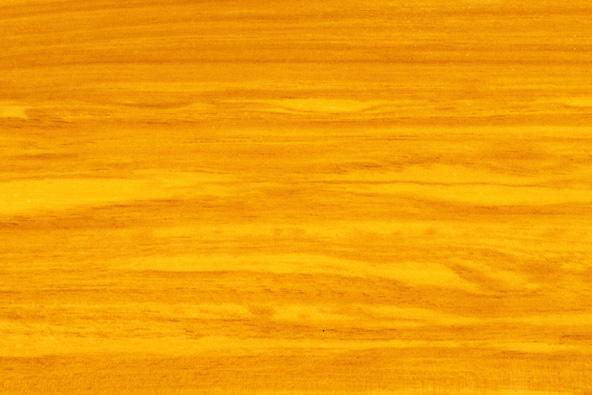Ramin is an imported straw-coloured hardwood used for mouldings, flooring, plywood, picture frames. Other applications include dowels, handles, turnery and carving.
Gaharu Buaja, Mavota, Melawis, Ramin Telur, Nununa, Ainunura, Lanutan, Bagyo, Gonystylus spp., Gonystylus bancanus, Gonystylus punctatus
Gonystylus macrophyllus
The timber sold under the name ramin comes from a mixture of species originating in Malaysia, Indonesia, Philippines, Papua New Guinea and Fiji.
Ramin is listed in Appendix II of the Convention on the International Trade in Endangered Species (CITES). Imports into Australia are required to be sourced only from sources approved by the Australian Government. You can find more information here.
Ramin is used for flooring, plywood, mouldings, dowels, handles, turnery and carving, and it is very popular for picture framings.
The heartwood is straw-coloured and the sapwood is similarly coloured and up to 60mm. The texture of ramin is medium and even and its grain is straight or shallowly interlocked, with very little figure. The green timber has an unpleasant odour but this disappears when it is dry.
Ramin is easy to work to a smooth finish. Pre-drilling may be needed when nailing near ends. It peels well, although the veneer is inclined to be brittle, and it is unsuitable for steam bending because of excessive buckling. If any inner bark is present on material being processed, the fine splinters from it can cause skin irritation. It glues well, and takes polish, paint and stains easily.
The untreated sapwood is susceptible to lyctid borer attack and is not resistant to termites. It takes preservatives easily.
Shrinkage
| Very Low | Low | Medium | High | Very High | |
|---|---|---|---|---|---|
|
|
|
|
|||
|
Tangential :
|
4.80% | ||||
|
Radial :
|
1.80% | ||||
|
Unit Movement Tangential:
|
0.31% | ||||
|
Unit Movement Radial:
|
0.13% |
Strength Group
| Very High | High | Reasonably High | Medium High | Medium | Reasonably Low | Low | Very Low | |
|---|---|---|---|---|---|---|---|---|
| Unseasoned: | S1 | S2 | S3 | S4 | S5 | S6 | S7 | S8 |
|
|
||||||||
| Seasoned: | SD1 | SD2 | SD3 | SD4 | SD5 | SD6 | SD7 | SD8 |
|
|
Stress Grade
|
Structural No. 1 |
Structural No. 2 |
Structural No. 3 |
Structural No. 4 |
Structural No. 5 |
|
|---|---|---|---|---|---|
| Unseasoned: | F14 | F11 | F8 | F7 | F5 |
| Seasoned: | F22 | F17 | F14 | F11 | F8 |
Density per Standard
| Seasoned: | 625kg/m3 |
|---|---|
| Unseasoned: | kg/m3 |
Joint Group
| Very High | High | Reasonably High | Medium | Low | Very Low | |
|---|---|---|---|---|---|---|
| Unseasoned: | J1 | J2 | J3 | J4 | J5 | J6 |
| Seasoned: | JD1 | JD2 | JD3 | JD4 | JD5 | JD6 |
|
|
Colour
| White, yellow, pale straw to light brown | Pink to pink brown | Light to dark red | Brown, chocolate, mottled or streaky | |
|---|---|---|---|---|
|
|
||||
Mechanical Properties
|
Modulus of Rupture - Unseasoned:
|
67 |
|---|---|
|
Modulus of Rupture - Seasoned:
|
128 |
|
Modulus of Elasticity - Unseasoned:
|
11 |
|
Modulus of Elasticity - Seasoned:
|
15 |
|
Maximum Crushing Strength - Unseasoned:
|
37 |
|
Maximum Crushing Strength - Seasoned:
|
70 |
|
Impact - Unseasoned:
|
|
|
Impact - Seasoned:
|
|
|
Toughness - Unseasoned:
|
Low - up to 15 Nm |
|
Toughness - Seasoned:
|
Medium - 15 - 24 Nm |
|
Hardness - Unseasoned:
|
2.8 |
|
Hardness - Seasoned:
|
5.8 |
Durability
| Low | Moderate | Reasonably High | High | |
|---|---|---|---|---|
| (0 - 5 yrs) | (5 - 15 yrs) | (15 - 25 yrs) | (more than 25 yrs) | |
|
In-Ground:
|
|
|||
| (0 - 7 yrs) | (7 - 15 yrs) | (15 - 40 yrs) | (More than 40 yrs) | |
|
Above ground:
|
|
|||
| (0 - 20 yrs, usually < 5) | (21 - 40 yrs) | (41 - 64 yrs) | (More than 60 yrs) | |
|
Marine Borer Resistance:
|
|
|
Lyctid Borer Susceptibility:
|
Susceptible |
|---|---|
| Lyctid Borer Susceptibility - Other: | |
|
Termite Resistance:
|
Not Resistant |
Fire Properties
| 0 | 1 | 2 | 3 | 4 | 5 | 6 | 7 | 8 | 9 | 10 | 11 | 12 | 13 | 14 | 15 | 16 | 17 | 18 | 19 | 20 | |
|
EFH Ignitibility: |
|
| 0 | 1 | 2 | 3 | 4 | 5 | 6 | 7 | 8 | 9 | 10 | |
|
EFH Spread-of-Flame Index:
|
|
||||||||||
|
EFH Smoke-Developed Index:
|
|
| 1 - non-combustible | 2 - reasonably non-combustible | 3 - slightly combustible | 4 - combustible | |
|
Fire Properties Group Number: |
|
| Group Number - Other: | 3 if used on MDF or particleboard ≥12mm; veneer thickness 0.6 - 0.85mm |
|---|---|
|
Average Specific Extinction Area:
|
<250 |
|
Bushfire Resistance:
|
BAL 12.5 and 19 – Door and window Joinery only |
The grain of ramin is straight or shallowly interlocked, with very little figure, and the texture is medium and even. The heartwood is straw-coloured, with the sapwood being a similar colour and up to 60mm wide.
Ramin is used for mouldings, flooring, and plywood. It is very popular for picture frames and its other applications include dowels, handles, turnery and carving.
Asia
